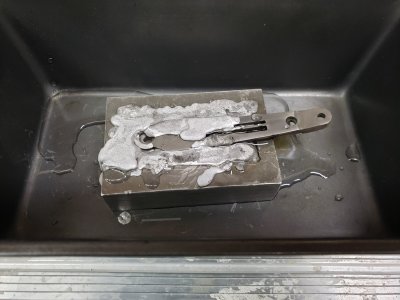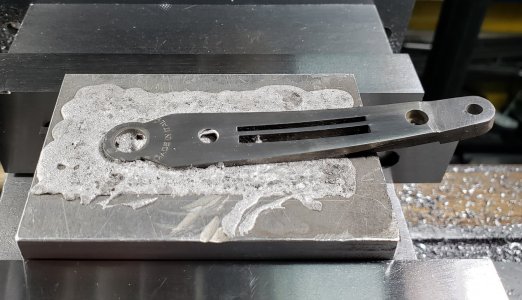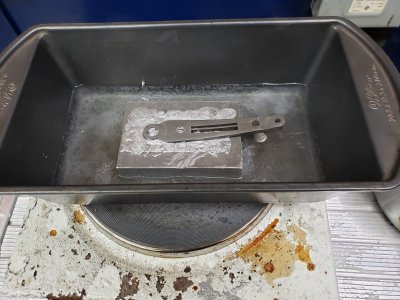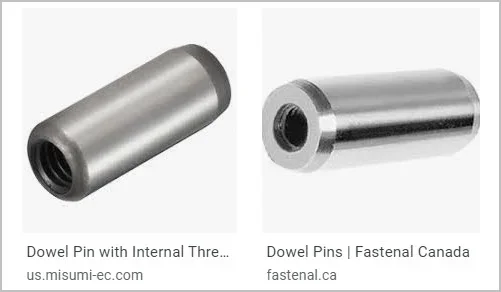You have a part to machine, but it is so irregular in shape there's no easy way to hold it securely. You could epoxy the part onto a plate, but then removing the epoxy afterwards can be troublesome. So what do you do? You use a fusible alloy. Low melting temperature metals. One specifically is Cerrosafe. Its formulated to melt slightly below the boiling temperature of water. Find or make a metal box that will hold your part to be machined, and position the part in the box. Put that box in a pan or tray to catch the drippings. Put the Cerrosafe in a pot and some water, put the pot on a hot plate. As the metal warms up, it will melt into a liquid. The water is there only to keep the temperature down. Once completely melted pour the Cerrosafe into the box holding your part. Pour enough Cerrosafe to completely surround your part. Let everything cool. Once cool, put the box in your vice or chuck, and machine away. Once you're finished the machining, put the whole box into a container with water, and put on the hot plate. Let it come up to temperature, the Cerrosafe melts the part comes out, use a brush to clean off any excess Cerrosafe left on the part. Remove from the boiling water, dry, and oil. Pour the melted Cerrosafe into the pot, and reuse as often as you want. A couple caveats. When machining your part, keep it cool. Remember, the Cerrosafe melts at 90°C, or there abouts, so you don't want your part coming loose. The other caveat is not to hold smooth, regular shaped parts, it could spin in the Cerrosafe.




















